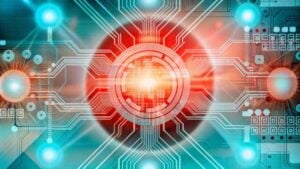Simultaneous Hydrogen and Fertilizer Production from Ammonia is Now Possible
Estimated reading time: 4 minutes
In a remarkable breakthrough, a research team from the Alliance University Ruhr in Germany developed a catalyst. This catalyst effectively converts ammonia into two important products. The first product is hydrogen, which is an energy carrier. Nitrite, the second product, serves as fertilizer. They achieved this in a single, integrated process. This innovative approach could revolutionize the production and distribution of these essential resources. It may also address the needs of previously separate industries.
A team created the catalyst. Ieva Cechanaviciute and Professor Wolfgang Schuhmann led the group. They are from Ruhr University in Bochum. They worked with Bhawana Kumari and Professor Corina Andronescu from the University of Duisburg-Essen. The journal Angewandte Chemie International Edition reported their work.
Traditionally, we make hydrogen and fertilizers separately. Each process needs a lot of energy. It also requires infrastructure. Infrastructure includes the basic physical systems required to run these processes, such as buildings and machinery. However, the research team’s new catalyst offers significant advantages by combining these two crucial processes.
Producing hydrogen usually requires a lot of energy. This process splits water (H2O) into hydrogen (H2) and oxygen (O2). This is accomplished using electrical energy. Use of renewable energy sources is necessary for the process to be sustainable. However, this can be challenging to do in some areas. Professor Schuhmann explains that Namibia is a suitable place. It has plenty of space for wind power and a lot of sunlight for solar panels. This makes the process feasible there. Therefore, Germany must import hydrogen from distant countries to build an economy based on it.
Transporting hydrogen is difficult because it becomes liquid only at very low temperatures. Specifically, it needs to be minus 253 degrees Celsius. High pressures, on the other hand, can also liquefy hydrogen. Both methods require a lot of energy and are logistically complex. The research team looked into converting hydrogen into ammonia (NH3) as an alternative. Ammonia becomes liquid at minus 33 degrees Celsius, which is a much more manageable temperature.
The Reverse Haber-Bosch Reaction
However, turning ammonia back into hydrogen and nitrogen is tricky. This process is known as the reverse Haber-Bosch reaction. Only hydrogen is useful and can make money. The nitrogen, on the other hand, is just waste.
To address this issue, the research team had an innovative idea. They decided to combine two processes. The first is the reverse Haber-Bosch reaction. This reaction converts ammonia back into nitrogen and hydrogen. The second process is water electrolysis. Water electrolysis uses electricity to split water into hydrogen and oxygen. This process consumes ammonia (NH3) and water (H2O) to produce nitrite (NO2) and hydrogen (H2). This approach is quite impressive. It doubles the hydrogen output. At the same time, it creates a useful material called nitrite. You can use nitrite to make fertilizer. Compared to producing nitrogen, which is unusable, this method is superior.
Ieva Cechanaviciute clearly explained the concept. They wanted to combine the reverse Haber-Bosch reaction with another process. This involves the electrolysis of water. The goal was to create a usable product for fertilizer production. They aimed to make nitrite or nitrate instead of nitrogen.
The researchers had a big challenge. They needed to find the right catalyst. A catalyst helps speed up a chemical reaction. They wanted to stop ammonia from turning into nitrogen. Because of its strong nitrogen-nitrogen triple bond, ammonia frequently changes into nitrogen. We first had to bridge this thermodynamic Grand Canyon, says Cechanaviciute. Their past research focused on multi-metal catalysts. These are substances that speed up chemical reactions and contain more than one type of metal. This research was very important. It helped them develop a new kind of catalyst. This new catalyst makes a unique, combined process possible.
Closing Remarks
This groundbreaking research sets the stage for a more efficient and sustainable way to produce hydrogen and fertilizer. This could change how the world creates and distributes these important resources. The scientific community is always looking for new ways to solve global problems. This new catalyst is a significant step forward in electrochemistry and energy technology. Electrochemistry is the study of chemical processes that cause electrons to move. Energy technology entails new methods for producing and using energy more efficiently.
To stay updated with the latest developments in STEM research, visit ENTECH. This is our digital magazine for science, technology, engineering, and mathematics.
At ENTECH, you’ll find a wealth of information. We offer insights and resources to fuel your curiosity. Our goal is to inspire your passion for new scientific discoveries.






